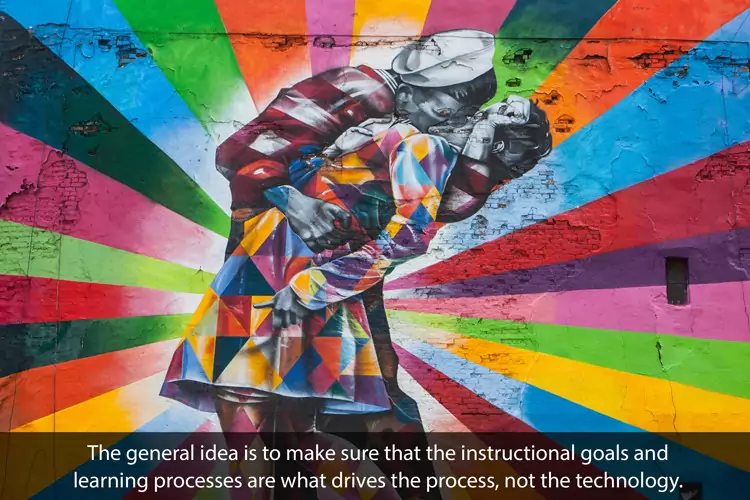A Model for Effective eLearning Design

Here’s how not to go about designing eLearning: Take existing instructional content and map it onto the technology you want to use. While this kind of repurposing occasionally makes sense, it’s putting the proverbial cart of delivery method choice before the more basic and essential proverbial cart of pedagogical and instructional issues. This runs the risk of eLearning that is inefficient because of the tendency to select technology that is more advanced than is really needed for what you’re trying to get across or eLearning that is ineffective because the technology actually isn’t robust enough to learn what you’re trying to teach. Based on the eLearning research of Michigan State University’s Steve Kozlowski and Cornell University’s Bradford S. Bell, here are the factors to pay attention to first:

The general idea is to make sure that the instructional goals and learning processes are what drives the process, not the technology. This all begins with a needs assessment from the performance domain that determines the instructional goals. Once you have the instructional goals nailed down, then you can start figuring out the right mix of the following four instructional features that go into your eLearning course:
- Content. This has to do with the richness of the way that basic information is conveyed. Ranging from low to high in richness are the following options: Text; still images/graphics; images in motion; sound (voice, music, special effects). Keep in mind that more information does equate with richer
- Immersion. This is about the degree of realism the training captures in terms of key psychological characteristics from the performance domain and how well it all engages and draws the learner into the experience. Clearly, this one is key for any kind of simulation programming. Ranging from low to high in richness are the following options: Psychological fidelity (of central constructs, processes, and performance measures); constructive forces; stimulus space or scope; fidelity of context/ops; motion and action; real-time; adaptive to trainee. Notice how the gradations here are towards including the physical.
- Interactivity. This has to do with the degree and type of interactions between remote trainers and trainees as well as among trainees. Ranging from low to high in richness are the following options: Single participants; individual oriented; multiple participants; team oriented. The more collaborate the learning, the better it sticks, especially when it involves learners teaching fellow learners.
- Communication. This is about communication bandwidth, with the following low-to-high in richness options: 1-way communications; 2-way communication; asynchronous communication; synchronous communication; audio only; audio and video. People tend to focus on the limitations of communication in eLearning, even with the greatest bandwidth available (real-time video link). Then again, there are some advantages to less-robust communication methods as well – differences in status may be greatly reduced, there is more time for thinking out responses, and so on.
Now layer into this framework the instructional goal, which may range from less complex to more complex, including the following: Declarative knowledge and skill; procedural knowledge and skill; strategic knowledge and skill; and adaptive knowledge and skill. You can then create a matrix that shows where your emphasis should be – if declarative information is the goal, then you would want to focus on text content, psychological fidelity for immersion, single participant for interactivity, and 1-way communication. Exceeding the needed richness in any one category could result in inefficient or ineffective training.
What I’ve presented here is actually a simplified version of the Kozlowski and Bell model that links instructional goals/objectives to instructional features. To get the full version in all its complexity, you’d have to get the book that contains their chapter on the topic, Toward a Science of Distributed Learning, edited by Stephen Fiore and Eduardo Sales. It’s a foundational model that all eLearning professionals should keep in mind.
Don’t Miss These Essential Tools
Download our The Strategic Value of Workplace Training and Development white paper
See 20 Ways to Improve Mandatory Training because the alternative is scary
Discover the Top 10 Ways Learning Management Systems Can Improve the Workplace Environment to enhance productivity
Explore the 10 Ideas To Optimize Online Training And Maximize Impact in your organization
Quickly see How to Jumpstart an E-Learning Program in Eight (8) Easy Steps